The Microsoft Surface Studio Review
by Brett Howse on January 20, 2017 8:00 AM EST- Posted in
- Desktop
- Microsoft
- Surface
- Surface Studio
Color Modes: sRGB, DCI-P3, and Vivid
Next up, let’s take a look at the color gamut accuracy on the three different display modes. sRGB is the one that most people are going to want to use most of the time, because most applications do not have any color management, but in the images below you can see just how much larger the P3 gamut is. It appears P3 is making its way to being the next gamut for computers, but without color management, it is going to be a messy transition.
sRGB
sRGB is still the default target for almost everything, so it is important to get this one right, even more than the others. You can see that the Surface Studio easily covers the sRGB gamut, and it is almost perfect at doing it. Really only the white levels bring the error levels up, with the colors almost perfect for this gamut.
DCI-P3
The sRGB gamut coverage was good, but the DCI-P3 is even better, with a much more accurate white point for this color space really helping the average error level here. But take a good look at the actual white point in the image, which is the square inside the triangle. On this color space, the white point shifts much higher into green, and away from the pure white you would expect of sunlight, which we call D65. The DCI-P3 gamut does not use D65, and is therefore not really going to be used much on the Surface Studio.
Vivid
Although called Vivid, this color mode is the correct P3 color space for computers, which is P3 D65. The gamut coverage is the same as DCI-P3, but the white point moves to the D65 point which is sunlight at noon. The Surface Studio is somehow even more accurate hitting this gamut than the two that are correctly named. Using the name Vivid is a poor choice in naming this when the other two color spaces are named correctly, so if you do own or buy a Studio, and you do want to look at P3 gamut content, Vivid is the correct color space to choose for this.
Color Accuracy
Now that we’ve looked at the various color spaces, it’s time to examine each one individually to see how the Surface Studio performs when set to each color space.
sRGB
On the sRGB tests, the grayscale and saturation tests were done to the new 2017 standard of 4-bit steps rather than 5% and 20% steps respectively. This gives a better picture of what the display is doing, and a much more accurate gamma result.
Grayscale
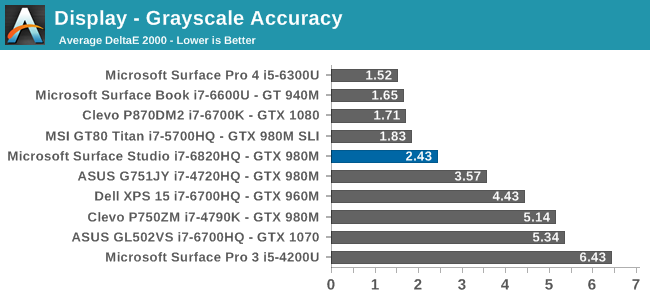
Microsoft nailed the gamma, which should be 2.2, and it very nearly is. However some errors creep up in the grayscale as the image gets closer to 100% white, with the red levels too high, and green a bit low. Overall, it’s still a very good average result, but not perfect. Notice how far they have come since the Surface Pro 3.
Saturation
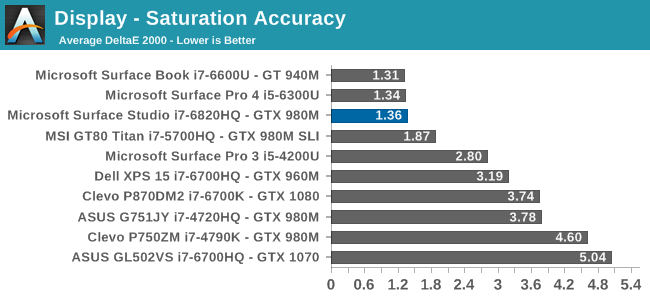
Once again, other than the white level errors at 100% white, the saturation result is fantastic. An overall error level of just 1.36 is very strong, and the individual color traces show that there are no real issues with any of the primary or secondary colors when set to sRGB.
Gretag Macbeth
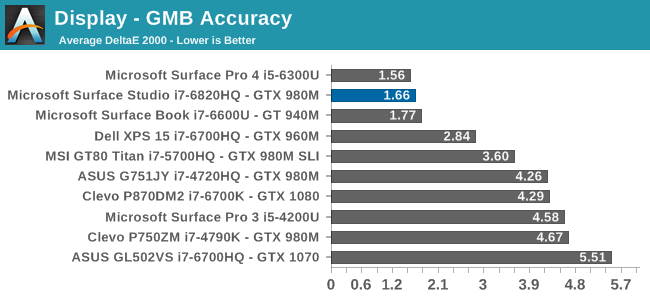
This test is the most comprehensive test, covering a large number of color points, including the important flesh tones. Here, again, the Surface Studio ends up with a fantastic result, and other than a single color, most of the errors are less than two, with many much closer to one. The sRGB results have started off very strong.
DCI-P3
Grayscale
When testing for the DCI-P3 color space, the gamma changes to 2.4, and the Surface Studio correctly hits this gamma as well. Across the entire grayscale sweep, the red, blue, and green levels are very consistent, and the average error level is just 1.27, which is outstanding. The display hits this new gamma and white point almost perfectly.
Saturation
Continuing its impressive results, the Surface Studio is practically perfect on the DCI-P3 saturation sweeps. The blue results and 100% white are the only real issues, but neither of them are really much of an issue at all.
Gretag Macbeth
An average error level under one is a great result again, and although there are a few individual colors that jump up to dE 2000 of three or so, almost every color tested is well under one.
Vivid (P3 D65)
Grayscale
The P3 D65 gamut moves back to a gamma of 2.2, and the Surface Studio nicely hits that. The error levels on the grays are all very low, with only 97.3% white jumping over the two line. The D65 white point is also almost perfect, with the red just a bit higher than it should be, but not to a level that would be very noticeable.
Saturation
The saturation graph is amazingly accurate. Only 20% yellow even crosses the one mark, outside of white and black.
Gretag Macbeth
Finally, the Gretag Macbeth test continues the trend of fantastic display calibration on the Surface Studio. Just a single color tested has an error level over three, with pretty much the rest of the tested colors showing an error level of under one. It is a pretty fantastic result.
Display Conclusions
It’s difficult to not be impressed by the work put into the Surface Studio’s display. Here we have a display with an ICC profile for sRGB, DCI-P3, and P3 D65, and in every gamut, the accuracy levels are near, if not the best, that have ever been tested on this site. It is a fantastic achievement, and a testament to what can happen if a company decides to focus on quality. There is no doubt that the Surface Studio’s display is the stand-out feature on this PC, and Microsoft has taken the time to individually calibrate each display to one of the highest levels of accuracy possible.
The fact that this display also features ten-point multitouch, and pen support, as well as having accuracy that is top-notch, makes the Surface Studio arguably the best computer display targeted towards consumers and prosumers. Combine that with the excellent 3:2 aspect ratio, the high pixel density, and practically perfect display scaling, and it would be hard to find any faults with this display. It truly is a masterpiece.


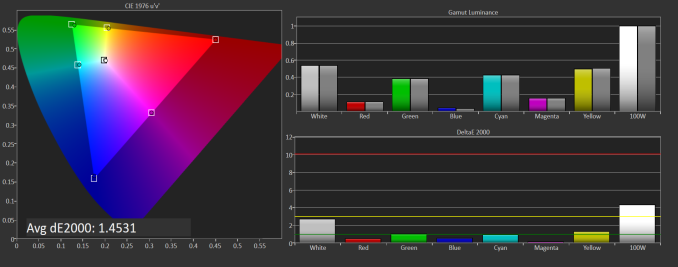
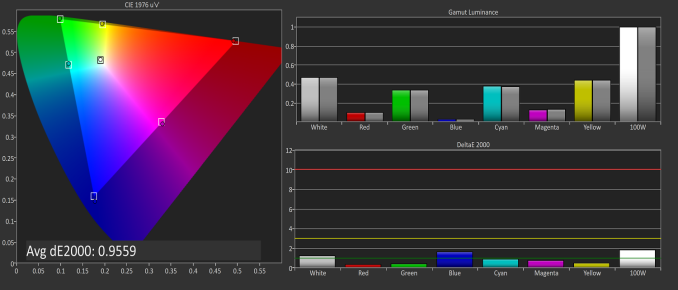

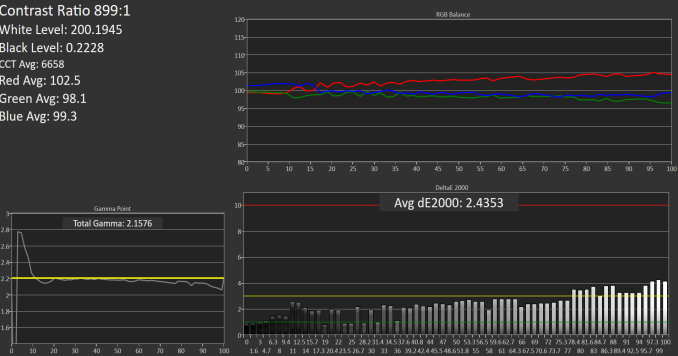
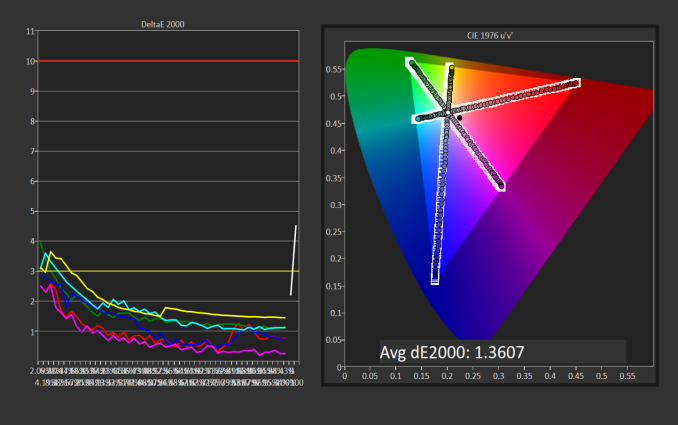

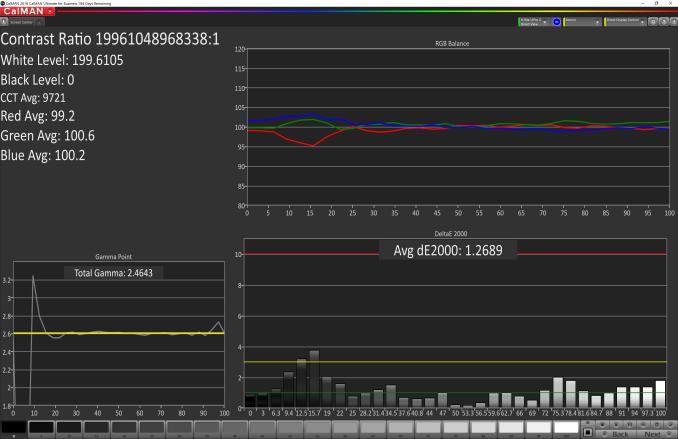
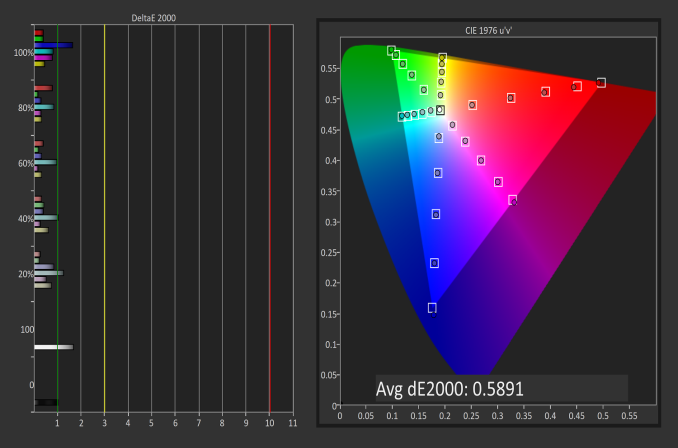
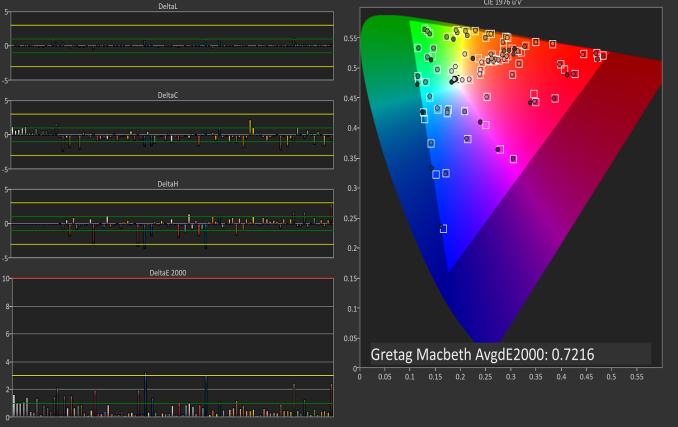

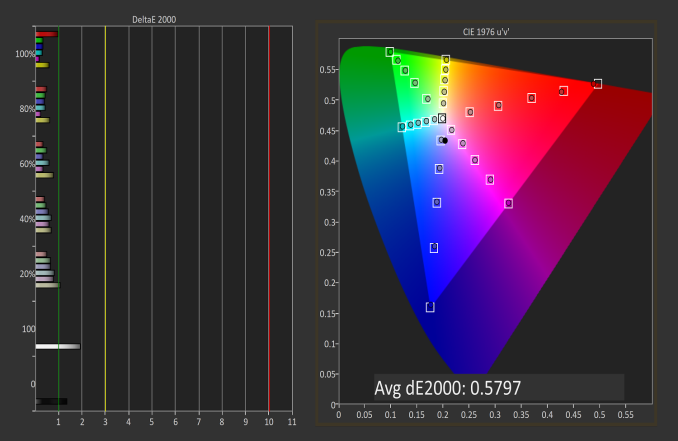
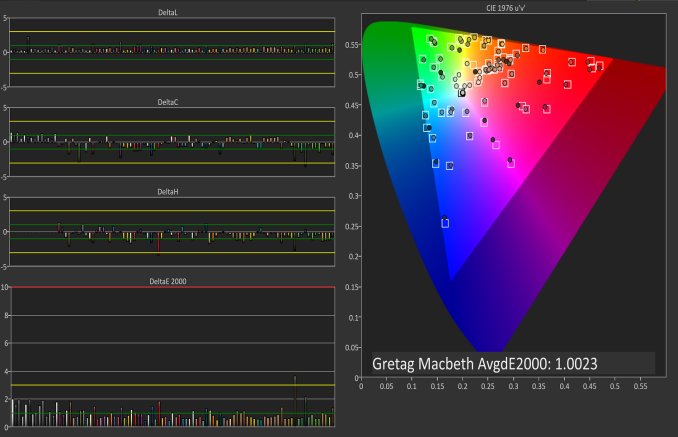








197 Comments
View All Comments
vLsL2VnDmWjoTByaVLxb - Friday, January 20, 2017 - link
The second one 3 months in? After Microsoft kept promising driver/firmware updates to address the issues?It's a business laptop that was going to be a test case for our company, selling it isn't our job. Microsoft extended the warranty, and we decided on XPS 15's instead for our fleet. (which work nearly flawlessly in comparison.)
It wasn't capable of reliable external display/peripheral use either, the dock sucked.
Icehawk - Sunday, January 22, 2017 - link
Yeah we have SP3s, 4s, and SBs at my work and none of them work reliably with more than one monitor. Our clients just love that.sprockkets - Saturday, January 21, 2017 - link
Not trying to troll, but that's like every MS computer since forever.I have an Asus computer that can't wake up either with Windows 8 or 10. Works fine with Linux, SuSE 42.1. Yea, linux isn't perfect but MS has had decades to get standby right, and can't.
Remember the last time an ios or android device failed to wake up when hitting the power button? Me either.
philehidiot - Sunday, January 22, 2017 - link
Sprokkets, that's a damned good point. How can waking from a sleep state continue to confuse Microsoft when as you rightly point out, phones do it multiple times a day flawlessly. It's maddening and you can't realistically sleep your PC during critical work without saving everything (and when you've multiple tabs, papers, word, Excel and PowerPoint documents open that's one big pain in the arse).thebuccaneergentleman - Sunday, January 22, 2017 - link
I don't know if EVERY MS computer is like this... Some are and some are not. We deployed hundreds of Surface Pro 1, 2 and 3s over the years at my company. Some were very good... many were not. The higher-ups though decided to pass on the Surface Pro 4 and started to purchase Lenovo laptops. It was a good call. Our IT support cases have dropped into single digits for the new Lenovos. MS had a PERFECT idea with the Surface. I LOVE the concept. But their execution (at least till the Surface Pro 3 as I have not used a SP4) was less than stellar. Too bad. Its hard to rebound from even a small bad batch.niva - Wednesday, January 25, 2017 - link
Yeah that's a ridiculous statement.I've been using linux for about 10 years now on all sorts of computers. Typically you will encounter issues in linux exactly with things like standby and sleep mode, even if everything else works out of the box. Don't even get me started on drivers for new hardware like dedicated graphics or application support. I've stayed with Windows pretty much 100% due to my Photoshop needs. Sure I game some on my desktop too, but these days even that wouldn't be enough.
I love linux, it's great for many things, especially for the price, but the area you brought up as an advantage somehow you're completely wrong about.
This new device from Microsoft is interesting. The price is ridiculous though. I'll wait for future generations and see how things go in the future. As an artist I'm definitely interested in these types of devices.
tamalero - Sunday, January 22, 2017 - link
There are a lot of stuff that Microsoft hs fucked up over the years.For example.. if your monitors turn off (multiple monitors). Your color calibration information resets to default.
Shutting down any monitor will now cause all the icons to switch to the remaining monitor and the color calibration will be lost as well.
Microsoft support tech(from India and Turkey) only kept repeating the same BS recipe of "reboot, didnt work? then boot in safe mode" and then end with "Its working as intended, its not a bug. We will report this to the developers for xxx reason" and nothing..
Rezurecta - Friday, January 20, 2017 - link
MS support is good. Just get you surface exchanged.geekman1024 - Saturday, January 21, 2017 - link
MS support is good, but their hardware products' quality isn't.My Surface 3's pen function is bad straight out of the box, so I have to send it in for repair the day I've got it. The Surface Pen 4 I've bought for the Surface have its bluetooth function working intermittently, most of the time the top button click doesn't work. Then I remembered I used to have a MS wireless laser mouse + keyboard combo which died 3 months after purchase. My XBox 360 RRoD'ed just a few weeks after warranty expired, nice calculation on the MTTF, Microsoft.
Seems like EVERY MS hardware product I owned have to turn bad at some time. Is it my bad luck or MS's QC needs some debugging?
goatfajitas - Monday, January 23, 2017 - link
Exactly... I dont want good support nearly as much as I want it to not break... Same reason I dont buy a Kia with a 10 year 100,000 mile warranty. I dont want it to break and be fixed for free, I want to not be stuck with a broken car I have to deal with regardless of who pays for it. This comment section alone is riddled with Surface Pro and Surface Book users reporting all sorts of issues. Pass. Big time pass.